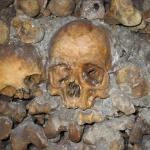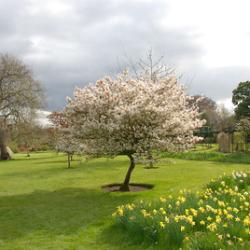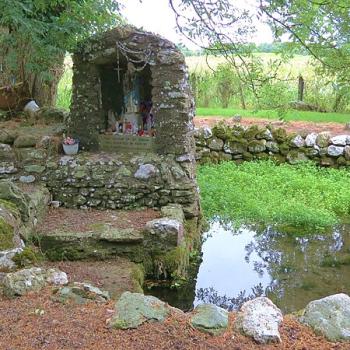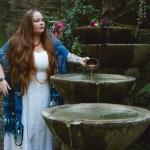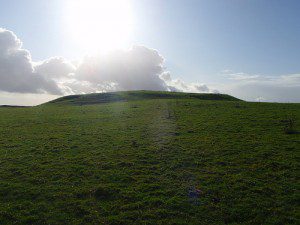
As welcoming as people were to dead relations, at the same time they needed to exercise caution while navigating a world that was intersecting with the Otherworld. For as easily as long gone family members could cross over, so could less pleasant Otherworldly beings. A large body of folk traditions exist on avoiding land spirits (faeries) in particular. It was preferable to travel in groups instead of alone, lest one be kidnapped into Faery. All Faery forts and mounds were thought to be open, and there are many examples of folk-tales that begin with somebody being accosted by a Faerie on Samhain eve. A personal favorite comes from “The Adventures of Nera” (Echtra Nerai) [11], where King Allil of Connacht challenges his warrior Nera to put a willow binding on the foot of a dead man on Samhain eve. When Nera arrives, the dead man requests a drink of water, and jumps on Nera’s back until Nera can find him one. This sets off a series of adventures that land Nera inside the Faery mound of Cruachan, where he meets and eventually marries a Faery woman. After living for a year there, he has a vision of the Faery host attacking Allil and Maeve’s rath at Cruachan. When told by his wife that this is a vision of things to come, she helps him escape to warn his people. When he gets back to King Allil and his troops, he is told that he had only just left and is asked if he was able to tie the willow binding onto the dead man [12]. In this story, Nera is lucky, as there are many examples of trips to Faerie that seem to take but a year while really taking centuries.
Samhain was also a time where one could give offerings to secure blessing and protection for the coming year. In Saint Patrick’s highly sensationalized description of human sacrifices to the god Crom Cruach at Samhain [11], he essentially describes what is a blood offering to an idol. Such practice would be in line with known Celtic devotional sacrifices, and it is likely that some form of Samhain blood sacrifice did exist as a means to gain blessing and protection for the new year (specifically, blessings in the form of land/animal fertility and food production). Almost two weeks after Samhain comes Saint Martin’s Day, which features a blood sacrifice thought to have been originally moved from Samhain. Specifically, a rooster was sacrificed and his blood was sprinkled on the four corners of the house as a means of protecting the home and family and ensuring luck for the coming year [4]. A more modern tradition is that of the Ring Gaeltacht, which comes to us from Southeast Ireland [4]. Here, children would go from house-to-house collecting gifts on Samhain eve. When arriving at each house, the revelers would begin by mentioning that this was the night of Samhain and then reminding the homeowner about Moingfhionn (Mongfind). This was ancestral witch figure that local tradition held was called to on Samhain [6]. For homeowners that were generous, the children would call down blessings upon them for the coming year. But for homeowners who were stingy, the children could just as easily call down a curse.
The last major theme of Samhain was divination for the coming year [5]. With the veil thin and celestial order breaking down, it was thought possible to catch a glimpse of what was to come in the new year. Popular topics for divination included what weather to expect for the coming winter, who would get married, who would die, and what kind of fortune someone would expect the new year to bring. It is this last topic that has had the most lasting impact on the secular Halloween. One method for determining one’s fate involved putting one’s head in a bucket of apples and removing one with their teeth. Another involved blindfolding an individual and sitting them at a table with a number of bowls, each containing something different. Whichever bowl the individual touched first indicated something about how their luck would play out in the new year [5].



